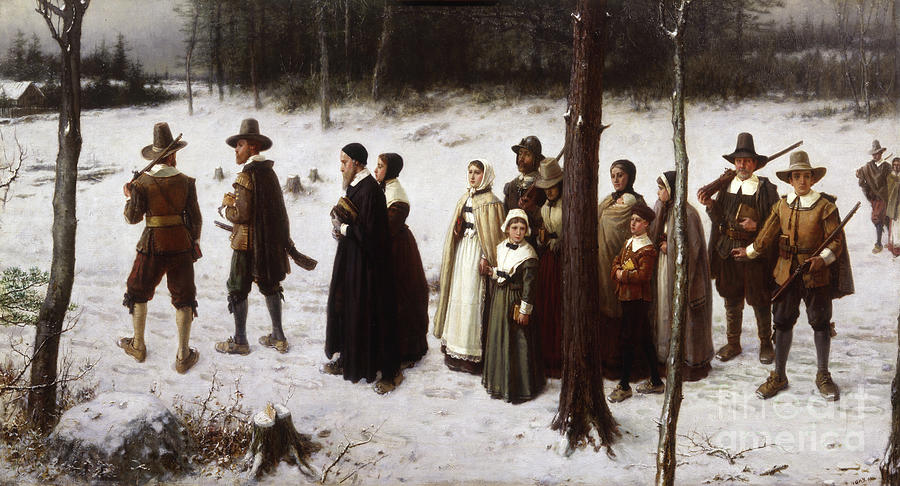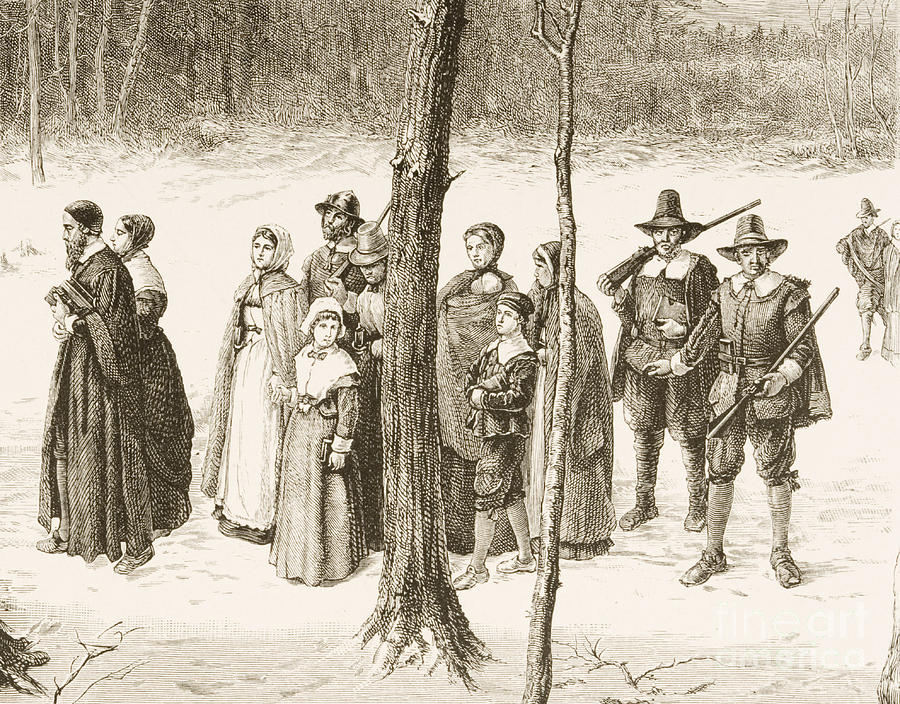

Whereas the Puritans who founded Massachusetts Bay in 1630 considered themselves reformers within the Church of England, the Plymouth settlers of 1620 had already broken with the church. They were Calvinists who held individuals powerless to determine their destiny in the world beyond, whereas the Church of England had drifted in recent years toward an “Arminian” belief that through good works and faith, Christians could secure their own salvation. Puritans, both separatists and nonseparatists, deplored Anglican forms of worship that departed from original Pauline practices: priests in robes and vestments a prayer book and liturgy divergent from the Bible candles, ornaments and holidays-including Christmas-seemingly more pagan in origin than Christian. The Pilgrims who landed at Plymouth in December 1620 occupied the extreme edges of the Puritan movement, an opposition strain within the Church of England. It’s possible we’ve outgrown the need for this particular myth-and that’s one of the things we have to be thankful for. Four hundred years later, not only would the Pilgrims find the country they inhabited completely alien, they wouldn’t understand why we commemorate their Thanksgiving feast of waterfowl, venison, clams and lobster with a standard meal of turkey, stuffing and sweet potato casserole with marshmallows. Unlike 16-the latter, a landmark moment in the nation’s political development the former, the nation’s original sin-the Plymouth landing was always more durable in memory than in influence.Īmerica’s romance with Puritan New England always had more to do with how Americans wanted to remember the nation’s founding than with its real importance to the country’s evolution.
.jpg)
Ultimately, the political and religious culture the Pilgrims and Puritans built had little to do with the nation we became-it shaped neither the republican revolution against Parliament and Crown in the 18th century nor America’s evolution into a diverse and boisterous democracy in the 19th century. Puritanism-both in Plymouth and Massachusetts Bay-fell into a state of decline within a generation of each colony’s founding. The colony they established, Plymouth, was a small, struggling outpost that never achieved the prosperity or influence of its close cousin, the Massachusetts Bay Colony, settled 10 years later by nonseparatist Puritans. In some ways, the quiet passing of this event right-sized the role of the Pilgrims. Relative to the debate over 1619, there’s been little fanfare and even less debate. To be sure, some conservative voices have seized on this year’s anniversary to counter the Times’ undertaking, but for the most part, they seem to be shouting into a void. The New York Times’ 1619 Project excited tremendous controversy because it challenged established narratives that date the founding of America’s political development and character to 1620 or 1776. Not so last year’s 400th anniversary of slavery’s roots in North America. Given the central position the Plymouth landing long played in American public memory, it’s telling that the 400th anniversary has gone by largely unnoticed. Bound originally for Virginia, where they had been invited by local authorities to form their community, the “Pilgrims” experienced trouble navigating the rough currents of the Atlantic and instead made their way to nearby Plymouth, where they first set foot on December 11. Cape Cod was neither their original nor final destination.

Of those on board, roughly half were Puritan separatists-dissenters who broke away from the Church of England and hoped to establish a new society rooted in what they believed to be authentic Christian worship.

#Pilgrims and puritans plus#
Four hundred years ago this month, the Mayflower, carrying over 100 passengers plus crew, dropped anchor near Cape Cod after a perilous, two-month voyage.


 0 kommentar(er)
0 kommentar(er)
